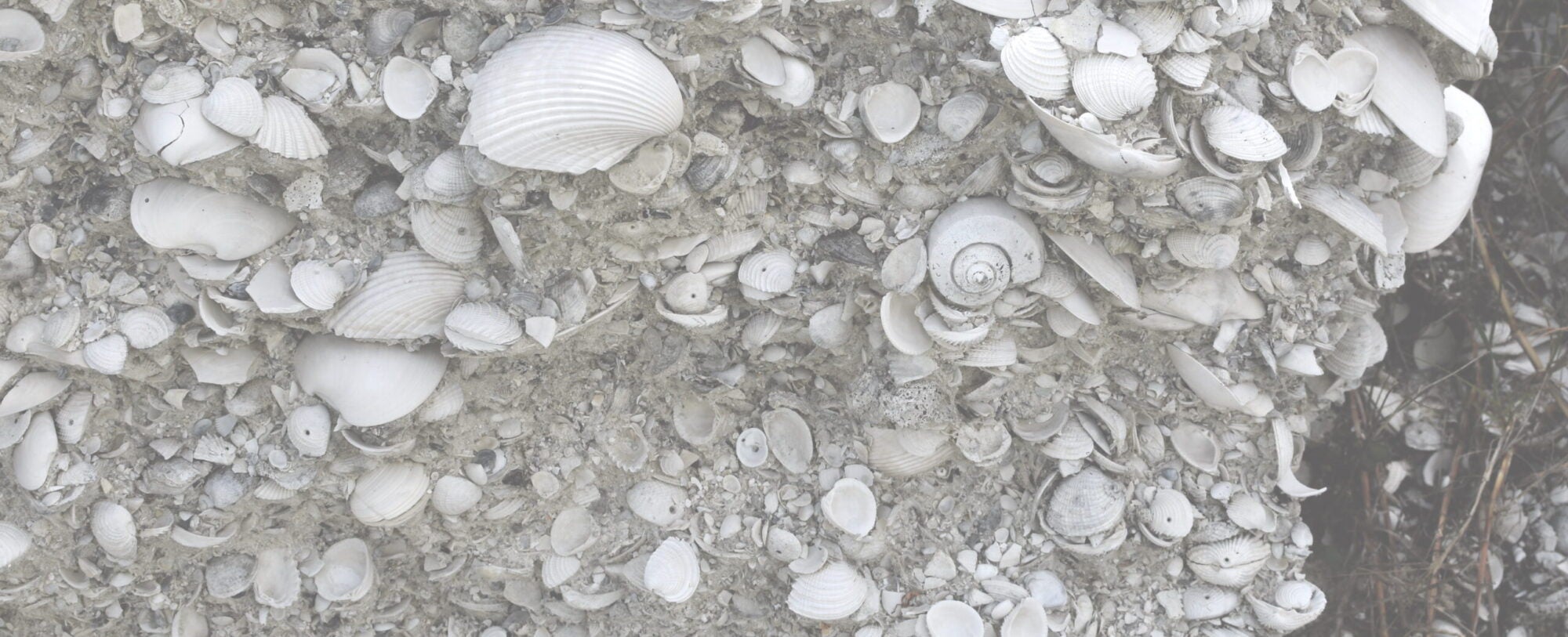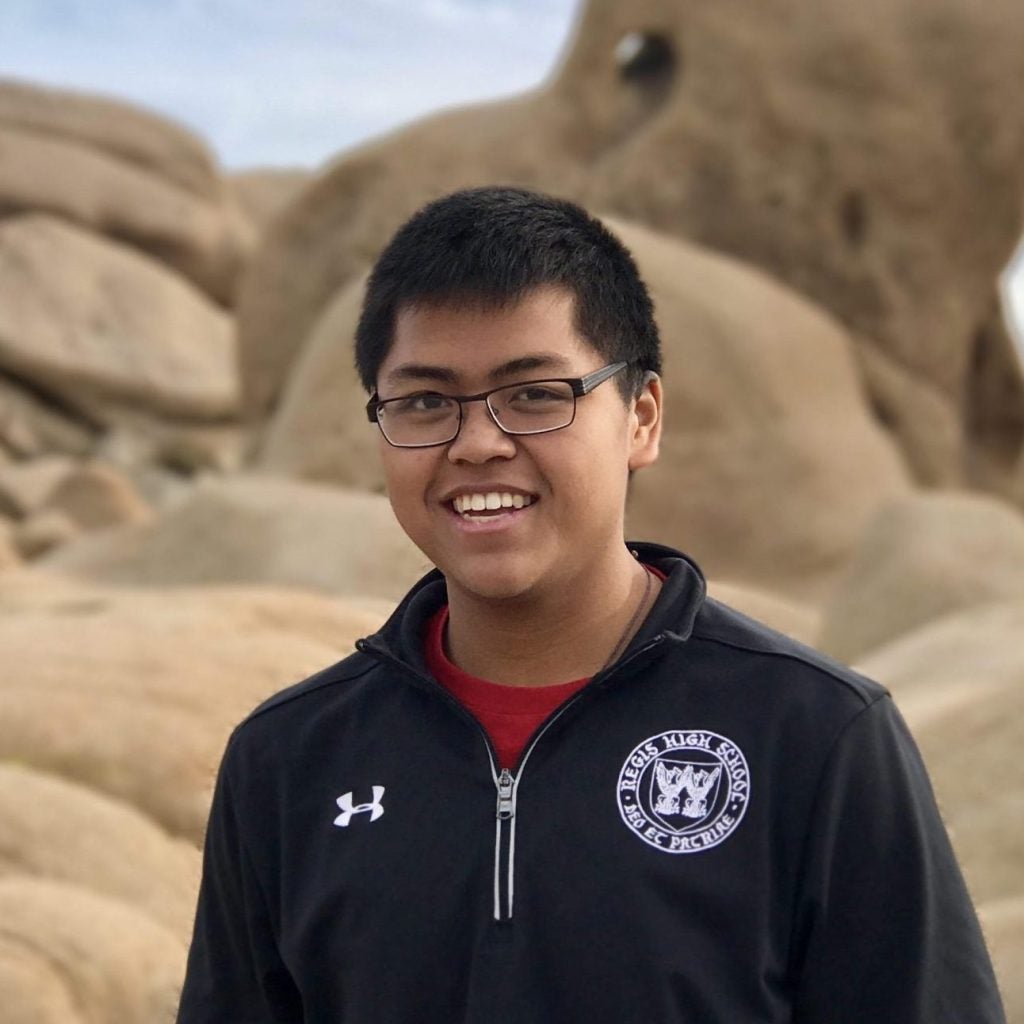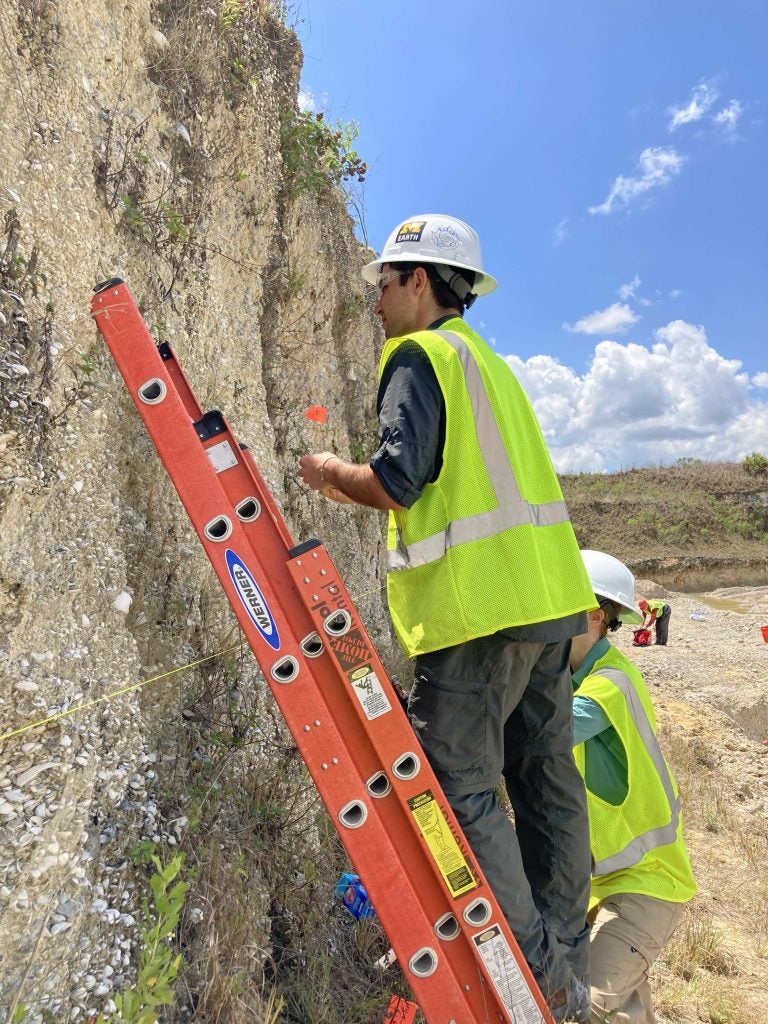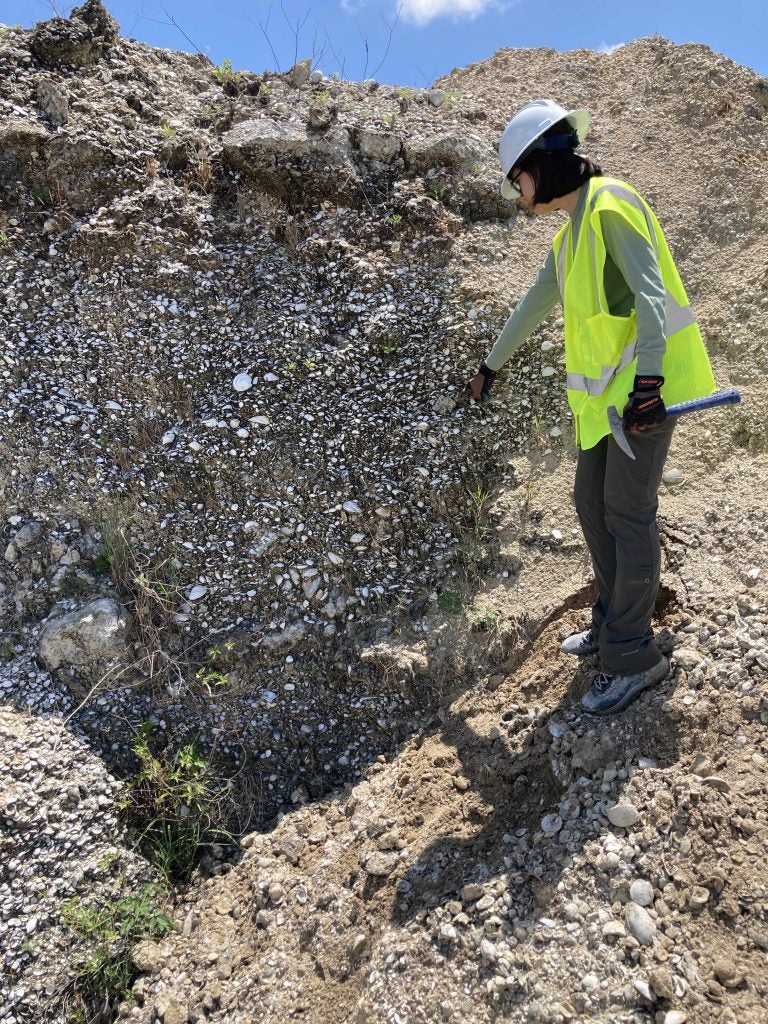Huge congratulations to PhD student Alex Quizon, who was selected for the NSF Graduate Research Fellowship. His project investigating precipitation mechanisms in marine gastropods using advanced clumped isotope techniques (paired D47, D48) will expand our understanding of precipitation mechanisms, phylogeny, and paleothermometry.
Allison awarded Smithsonian Predoctoral Fellowship

Congratulations to Allison, who has been awarded the Smithsonian Predoctoral Fellowship. She will be spending June-Dec 2023 in Washington D.C. at the Smithsonian Institute with our collaborator Dr. Stewart Edit. While there, she will be learning the ins and outs of the collections, how to measure shells for morphometrics, and will select samples for isotopic analysis back at UM. She will be investigating inner-outer shell layer differences in bivalves that died vs. survivied the KPg mass extinction.
New Paper Update: Clumped Isotope Review Article
PI Sierra Petersen joined forces with Professor Kate Huntington (University of Washington) to author a review article on all things carbonate clumped isotope thermometry for Annual Reviews of Earth Sciences.
While writing this article, we envisioned it being used as the handbook you’d give to a new graduate student or collaborator to get them up to speed on the current state of the field and how it got here. For students in particular, we wrote a “Student Companion” supplement that goes into class-lecture-level detail on a number of foundational concepts of clumped isotope thermometry. We had never seen this type of information collected into one place before and had always struggled on how to onboard new students efficiently.
We hope this article will be useful to the clumped community – old and new members!
LINK TO PAPER: https://www.annualreviews.org/doi/abs/10.1146/annurev-earth-031621-085949
LINK TO STUDENT COMPANION: https://www.annualreviews.org/doi/suppl/10.1146/annurev-earth-031621-085949
New Paper Update: Vital effects in bivalves, rebranded
A new paper out of the SCIPP Lab investigates isotopic differences between the inner and outer shell layers of bivalve shells. In this paper, PhD student Allison Curley and coauthors show that differences between inner shell layer (ISL) and outer shell layer (OSL) carbonate is conserved within a species but differs between species. We suggest this ISL-OSL difference is a proxy for physiology of the organism – how it grows its shell.
These particular samples represent 6 extinct bivalve species from Seymour Island, Antarctica. Some species show one direction of isotopic offset (d18O and d13C higher in ISL and D47 lower in ISL than OSL), others show the opposite direction offset, and a third group show no difference between the ISL and OSL. Tantalizingly, of the 6 species studied, the two that survive the KPg mass extinction show the largest magnitude offsets, potentially indicating an ability to regulate their internal body chemistry, even in the face of adverse external conditions.
This paper defines a framework for how ISL-OSL differences could be interpreted in other species and opens the door to a wide range of new research directions. Very exciting!
LINK TO PAPER: https://onlinelibrary.wiley.com/doi/full/10.1111/brv.12940
New Paper Update: Clumped isotope sclerochronology – a trade off between sampling resolution, precision, and growth rate
PhD student Jade Zhang published her second paper, this one focusing on high-resolution clumped isotope sampling in bivalves.
High-resolution isotopic sampling along the direction of maximum growth of a mollusk (isotopic sclerochonology) has been done for many years using oxygen and carbon isotopes. This method can reveal seasonality of climate (via the d18O max, min, and range), mollusk growth rate, and more, but suffers from the same issues all oxygen isotope paleothermometry methods do – unknown d18Owater. Clumped isotope paleothermometry doesn’t have the same issues with uncertainty in d18Ow, but large historical sample size requirements have prevented much application of this powerful technique to mollusk sclerochronology.
With recent reductions in sample size, this new area of clumped isotope paleothermometry is increasingly being explored. In this study, Jade applies different subannual sampling methods (seasonally targeted vs. continuous sampling) to modern shells of the bivalve Lucina pensylvanica from sites around Florida and the Caribbean, testing which methods work best in higher (Florida) or lower (Caribbean) seasonality locations.
In the end, she proposes a trade-off between sampling resolution, sample size, machine precision with different sample sizes, and bivalve growth rate. This study both defines L. pensylvanica as a robust recorder of climate and also serves as a template for designing clumped isotope sclerochronology sampling strategies on other species.
LINK TO PAPER: https://www.sciencedirect.com/science/article/pii/S0009254123000463
SCIPP Lab Welcomes new UROP Cohort
Clumped isotopes in the news
Prof Petersen was quoted in a science journalism piece in Ars Tecnica covering a recent high profile paper involving clumped isotopes by Meckler and coauthors published in Science Magazine. In that study, Meckler et al applied the clumped isotope paleothermometer to benthic forams from a sediment core in the Atlantic, taking the first steps towards recreating the iconic “Zachos curve” using this improved paleothermometer.
The Zachos curve has been used by many to describe global trends in climate over the Cenozoic (last ~66 million years). However, this curve is based on the d18O paleothermometer, which combines the influences of changing bottom water temperature (a proxy for global temperature) and changing global ice volume. If ice gets trapped on land in ice sheets and glaciers, the remaining seawater gets isotopically enriched, changing d18O values in benthic forams even with no temperature change. From just d18O measurements, it is impossible to separate the contributions of changing temperature and ice volume.
Meckler et al found bottom water temperatures during peak greenhouse periods were much warmer than previously determined. This is a very exciting result and shows the power and promise of using this improved paleothermometry technique for paleoceanography, especially during periods of changing or unknown global ice volume.
We hope that this work will continue and more similar records will be produced for sediment cores around the world, building a picture of global bottom water temperatures through the Cenozoic, unencumbered by uncertainties in ice volume.
New Paper Update: Tropically Hot Cenomanian temperatures in the Western Interior Seaway
The latest SCIPP-Lab paper comes from former SCIPP-lab postdoc Dr. Matt Jones (now at the Smithsonian Institute), publishing the work he did while at UM. Dr. Jones looked at fossil oysters from the Cretaceous Western Interior Seaway and used clumped isotope to reconstruct seaway temperatures during the time they lived.
We found that temperatures during the Cretaceous Thermal Maximum (Cenomanian-Turonian period, ~95 Million years ago) reached upper 20’s to lower 30’s Celsius in what is now modern day Utah and Wyoming. This is very hot! These water temperatures, which occurred in the mid-latitudes during the Cretaceous, are today only found in the warmest areas of the ocean like the Western Pacific Warm Pool. It makes you wonder how hot the tropics were if the mid-latitudes were >30C!! But that’s for another day…

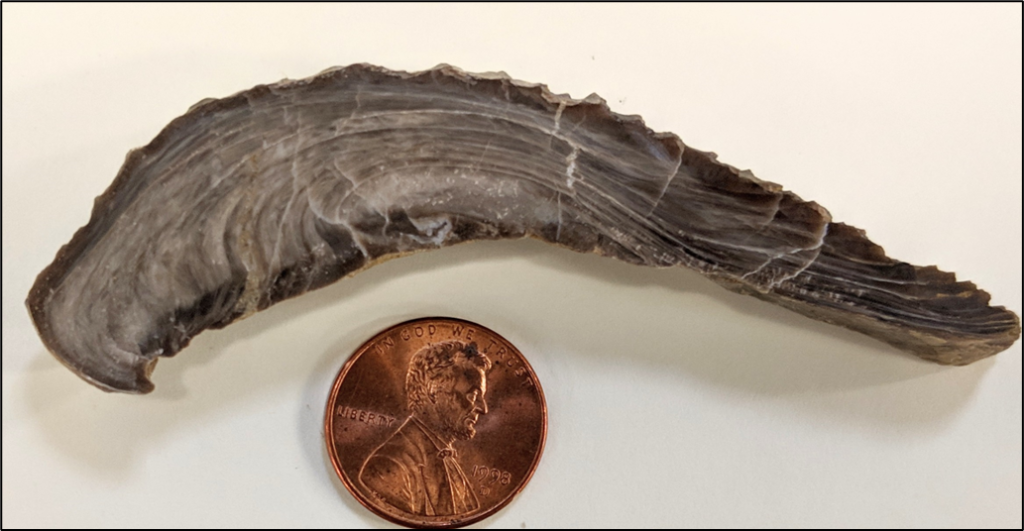
LINK TO PAPER: https://pubs.geoscienceworld.org/gsa/geology/article/doi/10.1130/G49998.1/613546/A-tropically-hot-mid-Cretaceous-North-American
LINK TO UM PRESS RELEASE: https://news.umich.edu/bali-like-temperatures-in-wyoming-fossils-reveal-tropically-hot-north-america-95-million-years-ago/
LINKS TO OTHER PRESS: Futurity article, Science Daily article,
Florida Field Work – May 2022
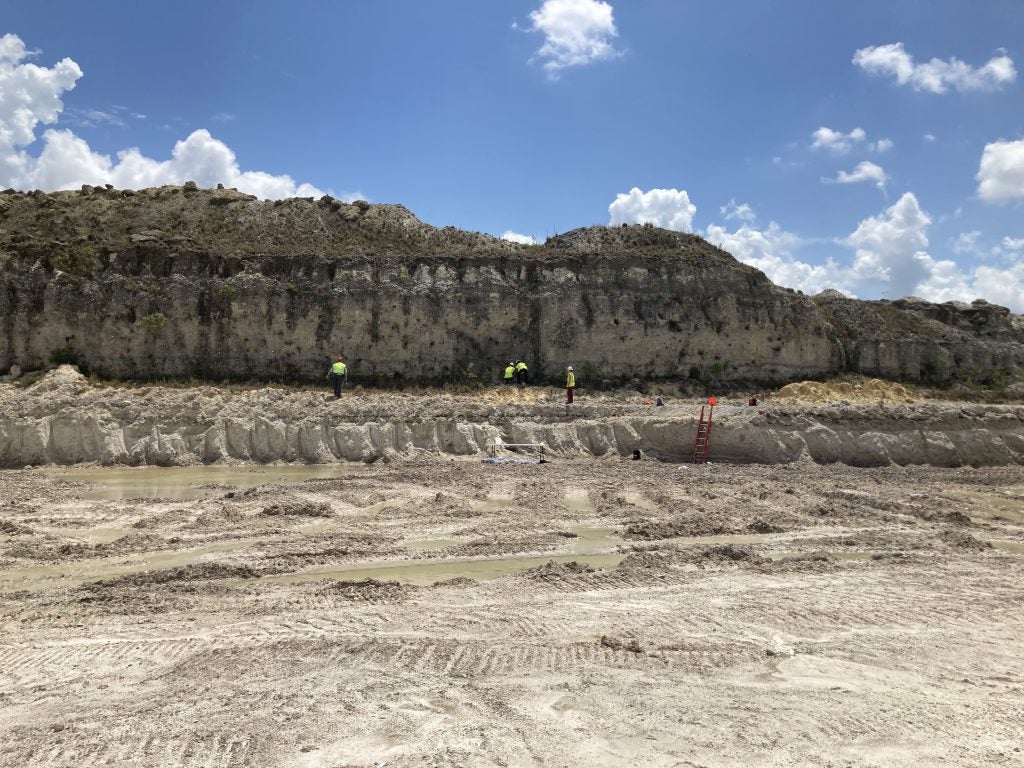
Four members of the SCIPP lab ventured to sunny, hot, humid (sooo humid so hot) Florida to gather shells from the Plio-Pleistocene for geochemical analysis. We spent 5 days in the Florida Shell and Fill quarry near Punta Gorda gathering as many fossils as we could. Graduate students Lucas Gomes, Allison Curley, and Jade Zhang accompanied Professor Sierra Petersen and collaborator Peter Riemersma (Grand Valley State University) for the week. Our local contact Roger Portell from the Florida Museum of Natural History joined the group for the first two days to help us get our bearings. A big shout out to the owners and operators of FL Shell – Joe, Jess, Marilyn, James, Ernesto!! Thank you for giving us access to this awesome site.
During the Plio-Pleistocene interval (around 0.1-3.5 Ma), the southern portion of Florida was underwater much of the time (excluding glacial intervals where seawater was trapped in ice sheets and sea level was lower). Studied formations (Ochape, Caloosahatchee, Bermont, and Fort Thompson) represent marine to shallow marine to beach environments. These formations are SO full of shells, it wasn’t a question of whether we would FIND any fossils, more like could we SAMPLE the right ones and keep track of where we found them. We got very picky about which were the “best” ones by the end of the week.
This site has an amazing diversity of shells. Literally hundreds of species. Some large, some small. We found everything from hand-span-sized scallops (Carolinapecten) to mm-sized micromollusks. Although larger shells appeared caked in mud and sand, when you wash them off, they’re actually filled with even smaller shells!
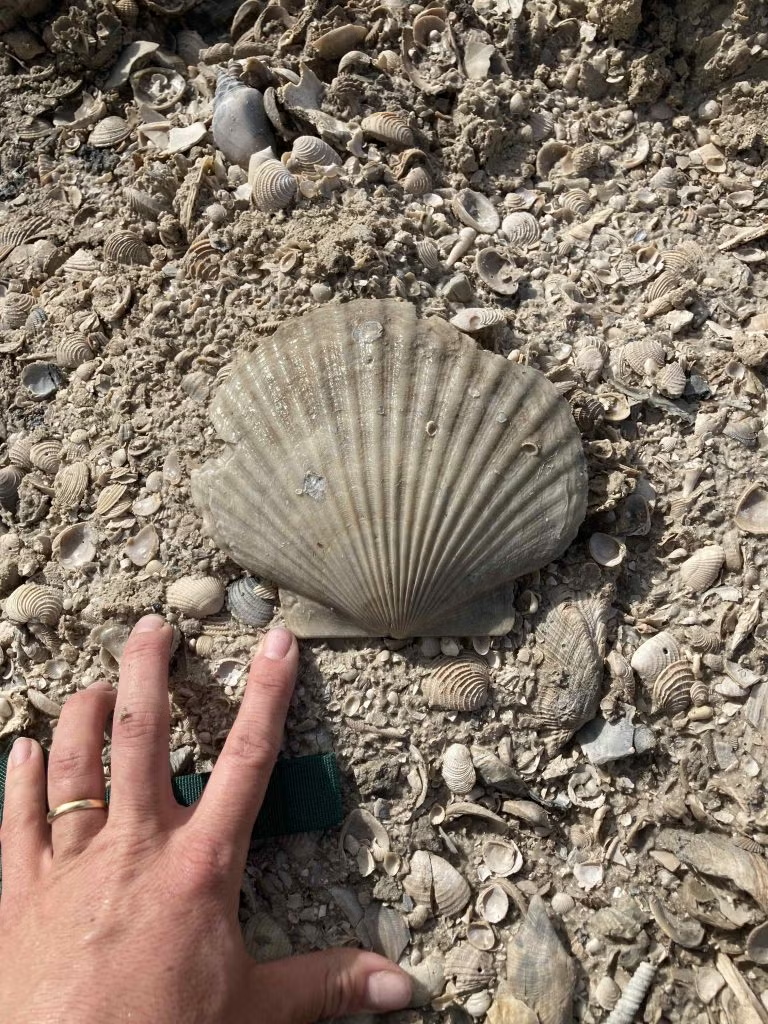

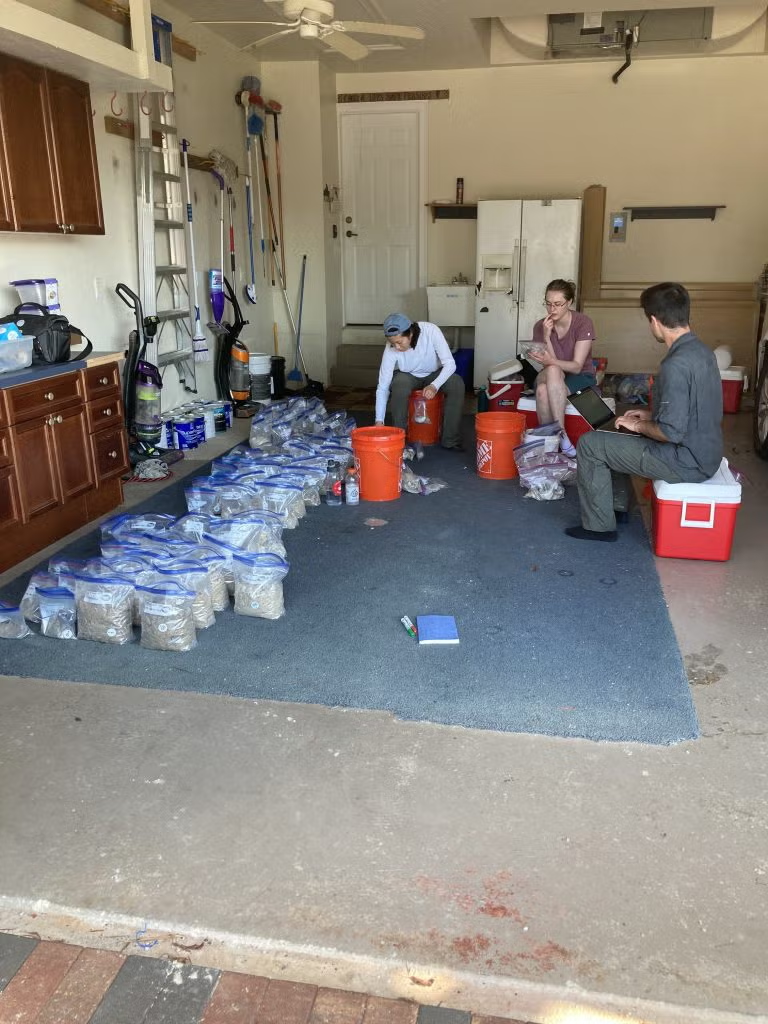
Whether it was the first real field work, or the first field work in a while, the grad student team did an amazing job with logistics, field sampling, and evening sample organization. Great job everyone! Very excited to see what science comes out of these (many many) samples. 🙂
Congrats, UROP team, for a great year!

The SCIPP Lab’s four UROP students finished the year strong with a second poster session. The UROP Research Symposium highlights all UROP students’ research projects over the past year. Samantha, Sabrina, Manmeet and Cecilie presented their work with confidence, building on their experience earlier this month at MGU. Cecilie was selected for a judges award. Congrats everyone on a great year in the lab!
Samantha and Cecilie will continue doing research in the SCIPP Lab, building and expanding their projects from this past year. Sabrina is going back to her other lab job (who holds two research positions at once? Impressive!) and Manmeet will be exploring other research opportunities in the Ecology and Evolutionary Biology department as he tries to decide whether to major in Earth or EEB.
It was great to work with all of you and congrats again on a great year!

